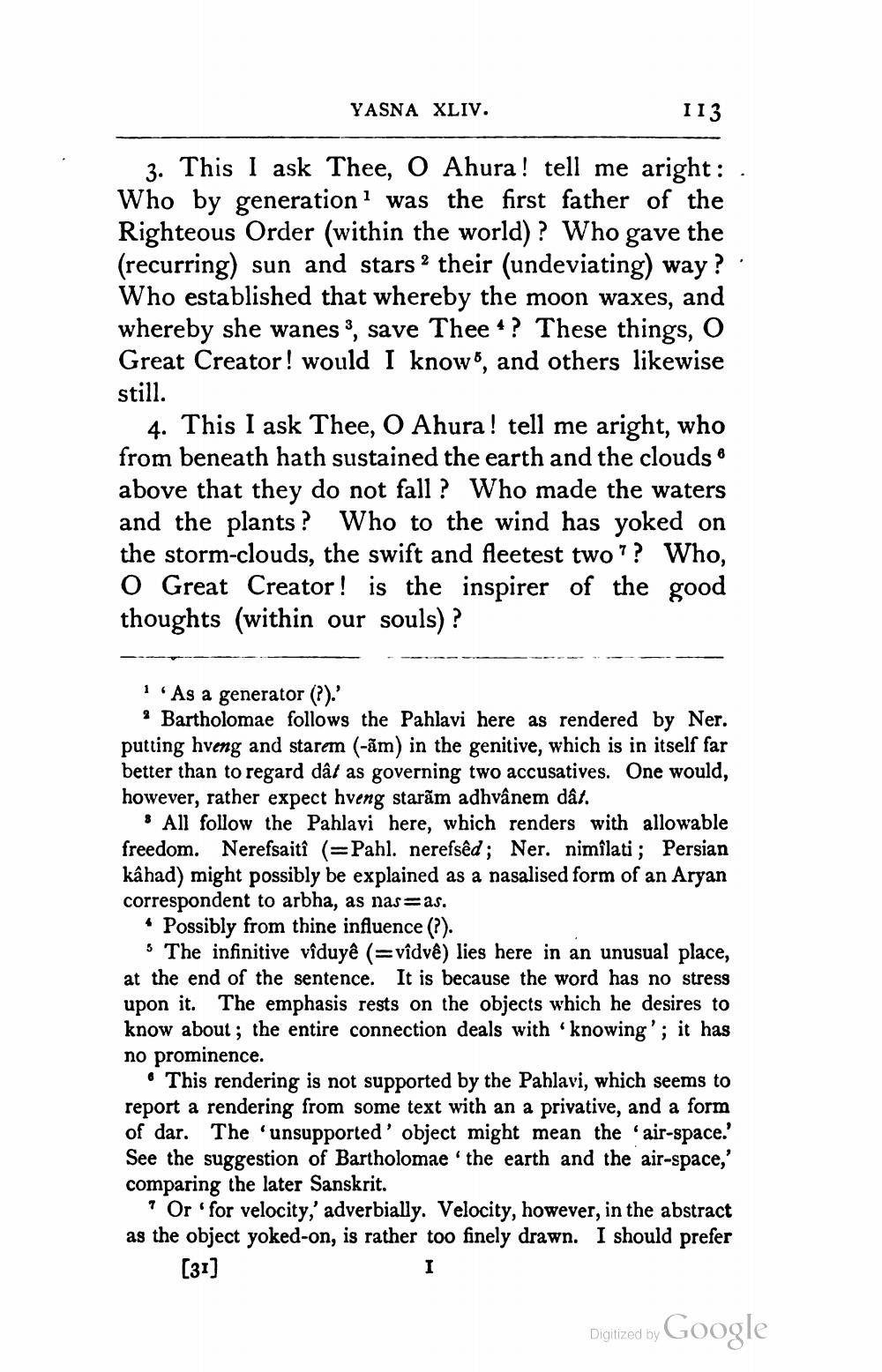________________
YASNA XLIV.
113
3. This I ask Thee, O Ahura! tell me aright: . Who by generation was the first father of the Righteous Order (within the world)? Who gave the (recurring) sun and stars 2 their (undeviating) way? Who established that whereby the moon waxes, and whereby she wanes 3, save Thee * ? These things, O Great Creator! would I know, and others likewise still.
4. This I ask Thee, O Ahura! tell me aright, who from beneath hath sustained the earth and the clouds 6 above that they do not fall ? Who made the waters and the plants? Who to the wind has yoked on the storm-clouds, the swift and fleetest two ?? Who, O Great Creator! is the inspirer of the good thoughts (within our souls)?
1.As a generator ().'
i Bartholomae follows the Pahlavi here as rendered by Ner. putting hveng and starem (-ām) in the genitive, which is in itself far better than to regard dat as governing two accusatives. One would, however, rather expect hveng starãm adhvânem dåt.
* All follow the Pahlavi here, which renders with allowable freedom. Nerefsaitî (=Pahl. nerefsèd; Ner, nimîlati; Persian kâhad) might possibly be explained as a nasalised form of an Aryan correspondent to arbha, as nas=as.
• Possibly from thine influence (?).
5 The infinitive vîduyê (=vidvê) lies here in an unusual place, at the end of the sentence. It is because the word has no stress upon it. The emphasis rests on the objects which he desires to know about; the entire connection deals with knowing'; it has no prominence.
. This rendering is not supported by the Pahlavi, which seems to report a rendering from some text with an a privative, and a form of dar. The 'unsupported' object might mean the air-space.' See the suggestion of Bartholomae'the earth and the air-space, comparing the later Sanskrit.
? Or 'for velocity,' adverbially. Velocity, however, in the abstract as the object yoked-on, is rather too finely drawn. I should prefer
[31]
Digitized by Google
Digitized by




